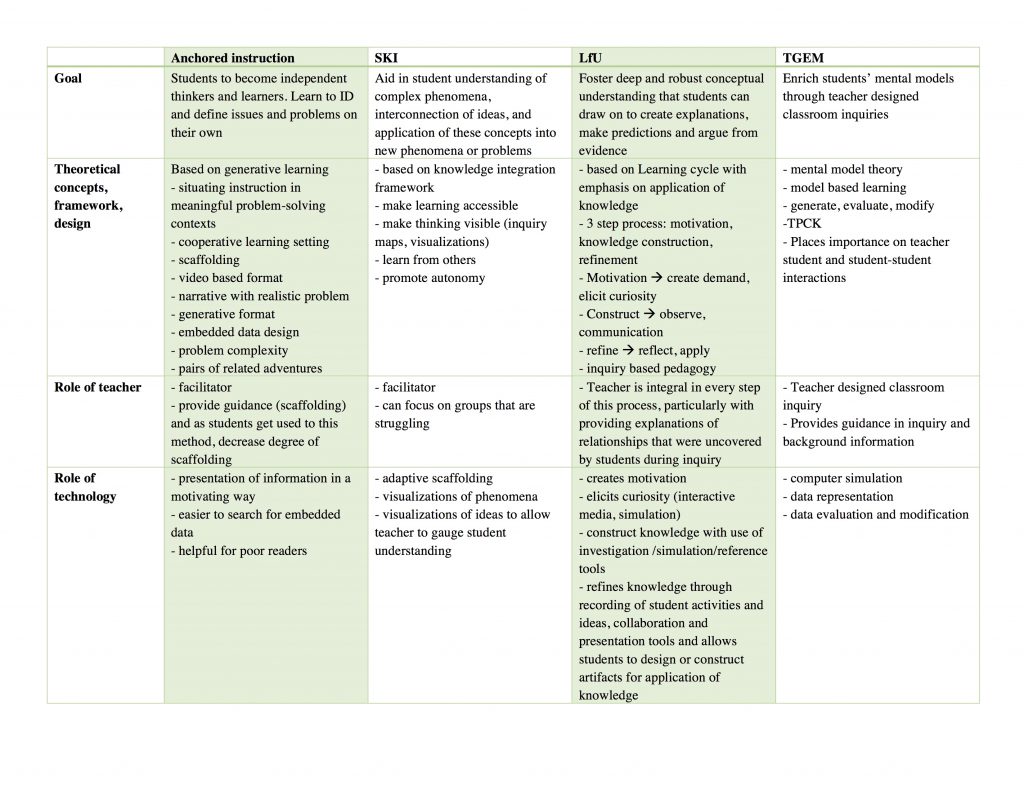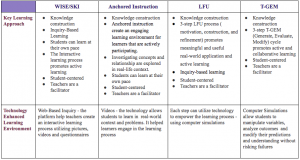TELES present an engaging and relevant way to encourage student learning. In Module B, we took a look at four models of TELEs which help to bridge the gap between real-world science and the textbook-based model many science teachers have become reliant on. These models are T-GEM, Anchored Instruction, SKI/WISE, and LfU. Some of the major similarities between these models are collaborative approaches, solving real-world problems, working with real-world data sets, and scaffolding new observations with student preconceptions. Such approaches strive to break the cycle of textbook and fact-based learning which do little for generating a realistic view of science, motivating students, and developing critical thinking skills. The exploration of these four models has greatly increased my confidence in building an effective science classroom. These topics are a refreshing way to integrate high level cognitive skills into a science classroom and will greatly aid my ability to design and run science classes which can remain interesting, relevant, and applicable to students.
While working through this module I still struggle to think of creative ways to include these four models into my mathematics instruction. Apart from data analysis and the use of math in multi-disciplinary problems, I remain lost in how to change my mathematics instruction in similar constructive ways as in science. I find the access to online Math instructional aides to be limited in ability and scope. As the new BC Ministry of Education rolls out to all the grades, learning activities such as the four which we looked at in this module will become valuable assets to fulfill curricular and core competencies.
Cognition and Technology Group at Vanderbilt (1992). The Jasper Experiment: An exploration of issues in learning and instructional design. Educational Technology, Research and Development, 40(1), 65-80.
Edelson, D.C. (2001). Learning-for-use: A framework for the design of technology-supported inquiry activities. Journal of Research in Science Teaching,38(3), 355-385. http://ezproxy.library.ubc.ca/login?url=http://dx.doi.org/ 10.1002/1098-2736(200103)38:3<355::aid-tea1010>3.0.CO;2-M
Khan, S. (2007). Model-based inquiries in chemistry. Science Education, 91(6), 877-905.
Williams, M. & Linn, M. C.(2002) WISE Inquiry in Fifth Grade Biology. Research in Science Education, 32(4), 415-436.

